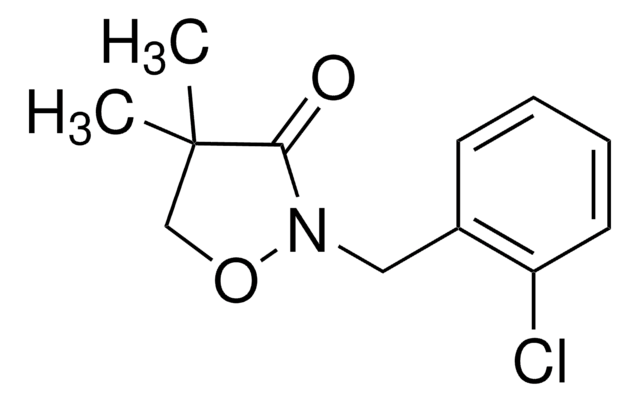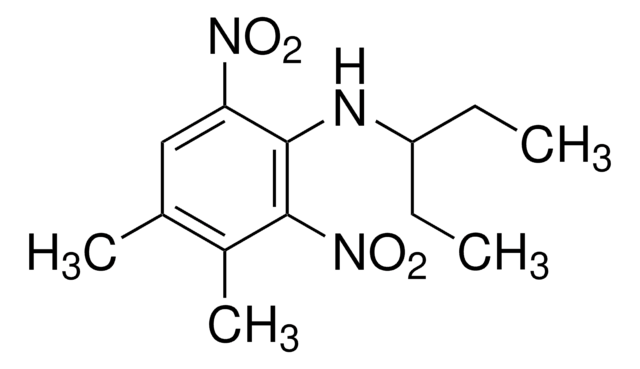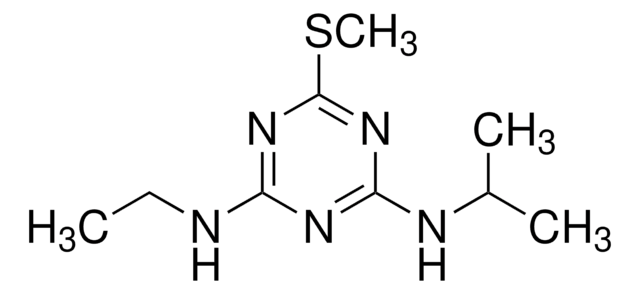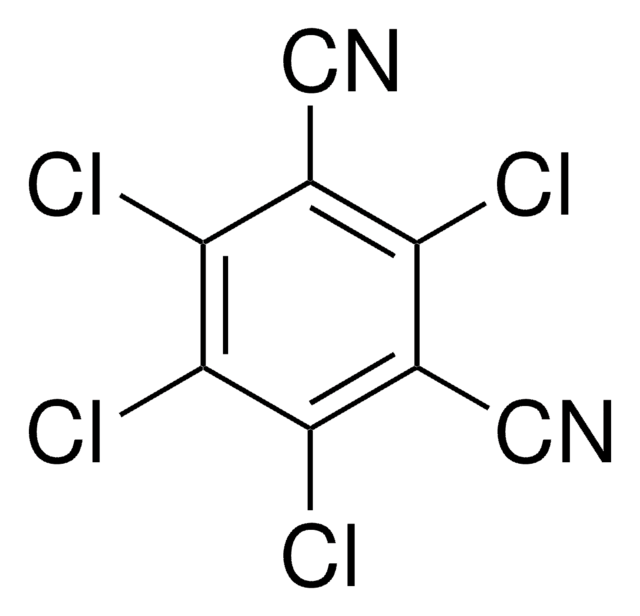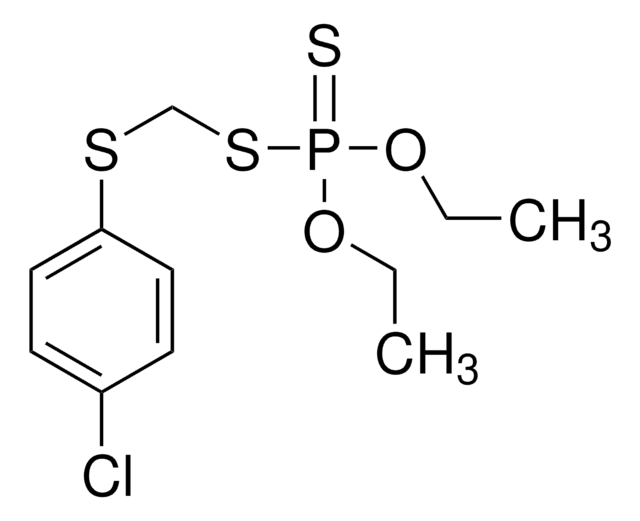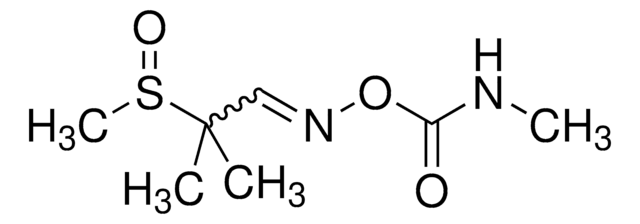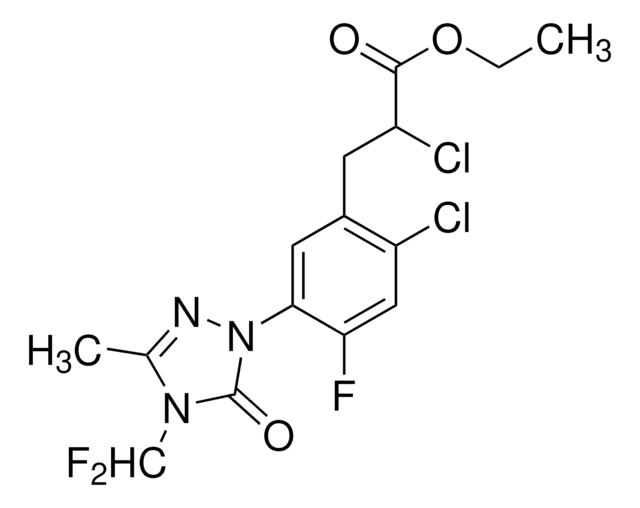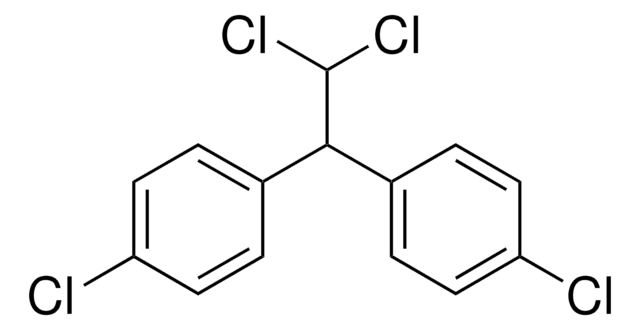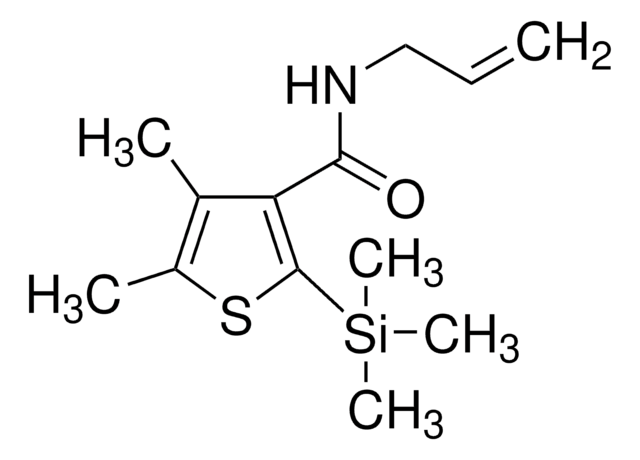46120
Clomazone
PESTANAL®, analytical standard
About This Item
Productos recomendados
grade
analytical standard
Quality Level
product line
PESTANAL®
shelf life
limited shelf life, expiry date on the label
application(s)
agriculture
environmental
format
neat
storage temp.
2-8°C
SMILES string
CC1(C)CON(Cc2ccccc2Cl)C1=O
InChI
1S/C12H14ClNO2/c1-12(2)8-16-14(11(12)15)7-9-5-3-4-6-10(9)13/h3-6H,7-8H2,1-2H3
InChI key
KIEDNEWSYUYDSN-UHFFFAOYSA-N
¿Está buscando productos similares? Visita Guía de comparación de productos
Categorías relacionadas
Application
- Ecological risk assessment of Clomazone in Northeast China: A study analyzed the presence and distribution of herbicide residues, including Clomazone, in soils across the Mollisols region, assessing their ecological risks. This research highlights the environmental impact of such herbicides and informs crop safety protocols and regulatory standards (Li et al., 2024).
- Characterization of Clomazone sorption in agricultural soils: This research characterized the sorption behavior of Clomazone in various agricultural soils using different kinetic models, contributing to a better understanding of its environmental interactions and aiding in the improvement of its application strategies for effective weed control (Ðurović-Pejčev et al., 2023).
- Bioassay assessment of water toxicity including Clomazone: A study utilized bioassays to assess the toxicity of water samples from Brazilian rural areas, implicating several contaminants including Clomazone. The findings are crucial for evaluating the safety of drinking water and the implications of herbicide runoff in agricultural settings (Brucker et al., 2021).
Legal Information
¿No encuentra el producto adecuado?
Pruebe nuestro Herramienta de selección de productos.
signalword
Warning
hcodes
Hazard Classifications
Acute Tox. 4 Inhalation - Acute Tox. 4 Oral - Aquatic Acute 1 - Aquatic Chronic 1
Storage Class
10 - Combustible liquids
wgk_germany
WGK 3
flash_point_f
314.6 °F
flash_point_c
157 °C
ppe
Eyeshields, Faceshields, Gloves, type ABEK (EN14387) respirator filter
Elija entre una de las versiones más recientes:
Certificados de análisis (COA)
¿No ve la versión correcta?
Si necesita una versión concreta, puede buscar un certificado específico por el número de lote.
¿Ya tiene este producto?
Encuentre la documentación para los productos que ha comprado recientemente en la Biblioteca de documentos.
Nuestro equipo de científicos tiene experiencia en todas las áreas de investigación: Ciencias de la vida, Ciencia de los materiales, Síntesis química, Cromatografía, Analítica y muchas otras.
Póngase en contacto con el Servicio técnico
